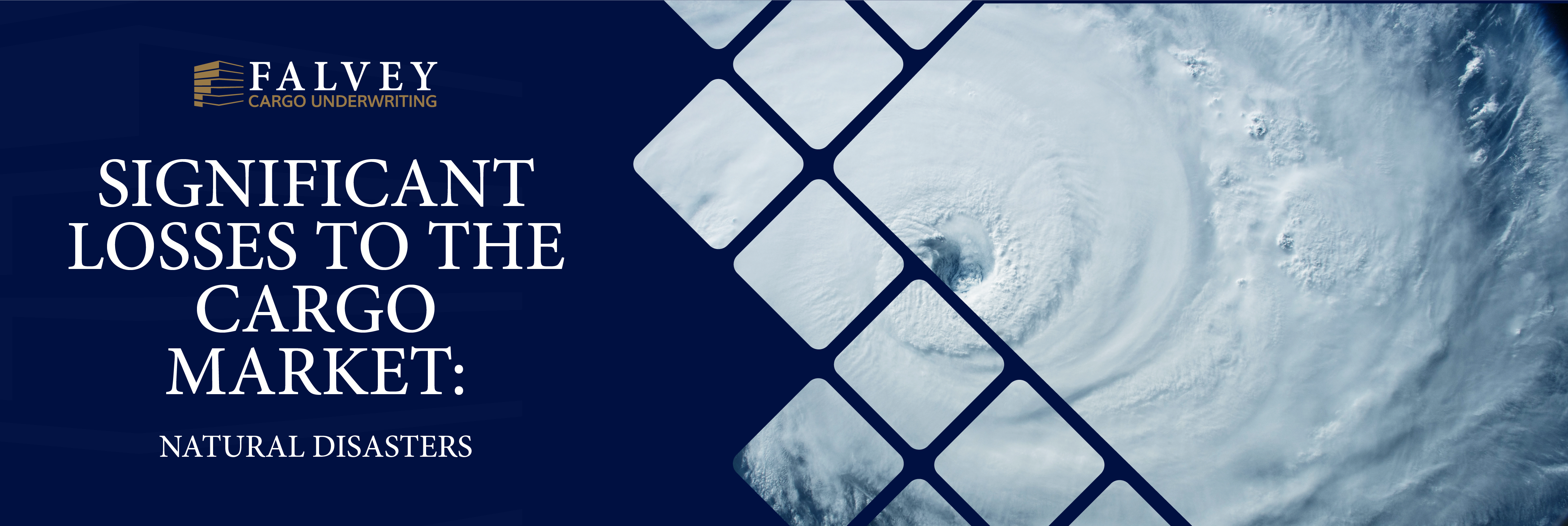Over the past few months, we’ve recapped some of the biggest losses in the cargo market, such as recent storage facility fires, and given our perspective on what these events mean for the industry going forward. In a continuation of that series, we’d like to reflect on some of the biggest cargo losses caused by natural disasters, some stretching back a few years. Here are some of the most significant natural disasters and our takeaways:
HIM Hurricanes:
Back in 2017, three major hurricanes hit the U.S. within a month of each other. Starting in August, Hurricane Harvey hit Texas, then Irma struck Florida a couple weeks later—both clocking at category 4 hurricanes. Maria, a deadly category 5, devastated Puerto Rico soon thereafter. Designated as the “HIM” storms, these were three of the five costliest hurricanes in U.S. history: Hurricane Harvey ranks second (behind Katrina) with $125 billion in damages, Maria is third at $90 billion, and Irma fifth at $50 billion. The close succession and severity of the storms put tremendous strain on insurers’ ability to adjust losses, dragging claims and settlements out for years.
California Wildfires:
California’s fire season has been increasingly catastrophic, with 2020 being the most destructive year on record. This year, nearly 4.2 million acres burned, over 10,000 structures were damaged or destroyed, and 11 people died. Prior to 2020, the 2018 wildfire season was the deadliest and most destructive, burning an area of 1.6 million acres and killing 100 people. The damage was so extensive, a national disaster was declared in Northern California in August 2018. Based on the pervasive and worsening fires, it’s clear that the time frame for the fire season in California (and up the West Coast) is extending each year.
Typhoon Jebi:
In September 2018, the most powerful typhoon in 25 years hit Japan. Category 5 Super Typhoon Jebi clocked winds up to 130mph and caused widespread flooding. At one point during the storm, an oil tanker was unmoored by the high waves in Osaka Bay and crashed into the only bridge that connects Kansai International Airport to the mainland, leaving 3,000 people stranded. Across all of the impacted areas, about 49,000 people were evacuated, 11 dead, and 600 injured. Insured losses were estimated at $13–14 billion USD.
Tennessee Tornadoes:
In March 2020, Nashville and nearby counties were hit with devastating tornadoes that killed 24 people and caused an estimated $1.1 billion in damage to homes, businesses, schools, and churches. In particular, Dell, CEVA Logistics, and FedEx sustained damages. Read more about the cargo losses caused by those tornadoes in this article.
Takeaways for the Cargo Market
Cover for natural disasters is a “sellers’ market.” Factoring natural disasters into stock throughput underwriting is no longer limited to a fault zone or coastal body. Exposure aggregation across a portfolio, both vertical and sideways, and occurrence definitions are now an important factor in providing capacity. Complex risk modeling systems are another predictive level impacting availability of capacity, rate loads, deductibles, aggregate limits, and flood, windstorm, and earth movement peril and occurrence definitions. For the first time the marine market is introducing wildfire definitions, exclusions, and aggregate limits. Spread of risk, quality construction measures at manufacturing and storage/distribution locations, and disaster recovery/contingency planning are some of the ways Insureds can mitigate their risk. Please contact Falvey Cargo Underwriting and ProTecht for assistance in reviewing your supply chain hazards.
Get more of our takes on some of the industry’s most notable losses by following us on LinkedIn or bookmarking our News page.




